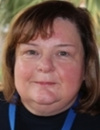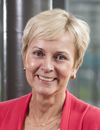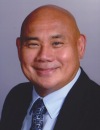Michael GelinskyProfessor and Head, Center for Translational Bone, Joint and Soft Tissue Research, Faculty of Medicine, Technische Universität Dresden Michael Gelinsky received his PhD in Chemistry from Freiburg University (Germany). In 1999 he moved to TU Dresden and worked for around 10 years at the department of Materials Science, heading his own group at the newly founded Max Bergmann Center of Biomaterials from 2002. In 2010 he was appointed Full Professor at the Faculty of Medicine and head of the Centre for Translational Bone, Joint and Soft Tissue Research (tu-dresden.de/med/tfo). His work is focused on biomaterials and scaffold development, tissue engineering and regenerative therapies, mostly for musculoskeletal tissues. His group is also very active in the field of additive manufacturing of implants and biofabrication technologies. Michael Gelinsky is currently President of the German Society for Biomaterials, is a member of the Board of Directors of the International Society for Biofabrication (ISBF) and has been appointed as coordinator of an ESA Topical Team on “3D Bioprinting of living tissue for utilization in space exploration and extraterrestrial human settlements”. He also is member of the ESA Facility Science Team (FST) for the development of a bioprinter and 3D cell culture system for the ISS. |
Daniela GrimmProfessor of Pharmacology and Space Medicine, Aarhus University Daniela Grimm is a specialist in internal medicine and clinical pharmacology. She is working in pharmacology and space medicine at Aarhus University, Denmark, as well as Guest Professor of gravitational biology and translational regenerative medicine at the Otto-von-Guericke-University Magdeburg, Germany. Her research group investigates the impact of altered gravity conditions on human cells in space, with major topics being cancer research, pharmacology, tissue engineering, and translational regenerative medicine. Daniela Grimm has been serving as Editorial Board Member and Guest Editor for Scientific Reports and the International Journal of Molecular Sciences. |
Lorenzo MoroniProfessor, Biofabrication for Regenerative Medicine, Maastricht University and Founder MERLN Institute for Technology-Inspired Regenerative Medicine Prof. Dr. Lorenzo Moroni studied Biomedical Engineering at Polytechnic University of Milan, Italy, and Nanoscale Sciences at Chalmers Technical University, Sweden. He received his Ph.D. cum laude in 2006 at University of Twente on 3D scaffolds for osteochondral regeneration, for which he was awarded the European doctorate award in Biomaterials and Tissue Engineering from the European Society of Biomaterials (ESB). In 2007, he worked at Johns Hopkins University as a post-doctoral fellow in the Elisseeff lab, focusing on hydrogels and stem cells. In 2008, he was appointed the R&D director of the Musculoskeletal Tissue Bank of Rizzoli Orthopedic Institute, where he investigated the use of stem cells from alternative sources for cell banking, and the development of novel bioactive scaffolds for skeletal regeneration. From 2009 till 2014, he joined again University of Twente, where he got tenured in the Tissue Regeneration department. Since 2014 he works at Maastricht University, where he is a founding member of the MERLN Institute for Technology-Inspired Regenerative Medicine. In 2016, he became full professor in biofabrication for regenerative medicine. His research group interests aim at developing biofabrication technologies to generate libraries of 3D scaffolds able to control cell fate, with applications spanning from skeletal to vascular, neural, and organ regeneration. In 2014, he received the prestigious Jean Leray award for outstanding young principal investigators from the ESB and the ERC starting grant. In 2016, he also received the prestigious Young Scientist Award for outstanding principal investigators from TERMIS. In 2017, he was elected as faculty of the Young Academy of Europe and in the top 100 Italian scientists within 40 worldwide by the European Institute of Italian Culture. Since 2019, he is chair of the Complex Tissue Regeneration department and vice-director of MERLN. From his research efforts, 3 products have already reached the market. |
Christine MummeryProfessor and Chair of Developmental Biology, Leiden University Medical Centre Christine Mummery is Chair of Anatomy and Embryology and Professor |
Danilo TagleDirector, Office of Special Initiatives, National Center for Advancing Translational Sciences at the NIH (NCATS) Dan Tagle is Director of the Office of Special Initiatives at NCATS where he many coordinates efforts towards development of disruptive technologies in translational research. He obtained his Ph.D. in Molecular Biology and Genetics from Wayne State University School of Medicine. He was an NIH National Research Service Award postdoctoral fellow in Human Genetics at the University of Michigan. He has served on numerous committees, advisory boards, and editorial boards. He has authored many scientific publications and has garnered numerous awards, including more recently the Roscoe O. Brady Award for Innovation and Accomplishment, and the Henry J. Heimlich Award for Innovative Medicine. |




